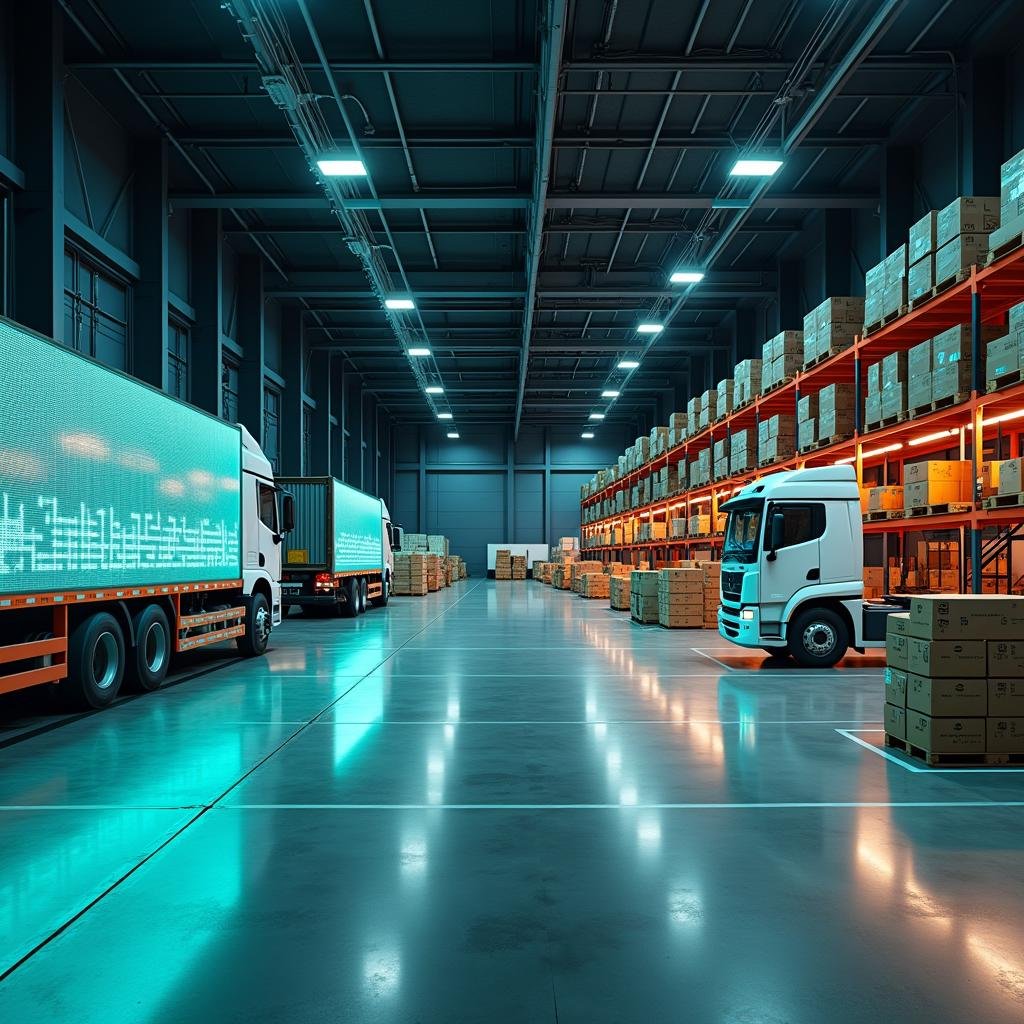In today’s rapidly evolving transportation landscape, the difference between thriving and merely surviving often comes down to how well your trucking and logistics company can adapt to change. The industry finds itself at a critical inflection point, with emerging technologies, shifting customer expectations, and new regulatory frameworks transforming how goods move across the globe.
The most successful organizations aren’t just responding to these changes reactively—they’re proactively positioning themselves to capitalize on tomorrow’s opportunities. But how can you tell if your operation is truly future-ready or at risk of being left behind?
This comprehensive guide explores the ten definitive signs that indicate your trucking and logistics business is prepared for the challenges and opportunities that lie ahead. Whether you’re managing a small fleet or overseeing a large-scale logistics network, these indicators will help you assess your company’s readiness and identify areas for strategic improvement.
1. You’ve Embraced Digital Transformation Across Operations
The foundation of any future-ready trucking and logistics company is a robust digital infrastructure. Gone are the days when logistics operations could rely on manual processes, paper documentation, and basic communication tools.
Advanced transportation management systems (TMS) now serve as the nerve center for forward-thinking logistics operations. These sophisticated platforms integrate everything from route optimization and load planning to driver management and customer communications. According to a McKinsey report, companies that have fully digitized their operations report up to 35% improvement in operational efficiency.
Key Digital Technologies Driving Logistics Innovation:
- Cloud-based platforms that allow real-time data access from anywhere, supporting remote work and distributed teams
- Mobile applications that give drivers, warehouse staff, and managers critical information on the go
- API integrations that connect your systems with customers, carriers, and partners for seamless data exchange
- Automated document processing to eliminate paper and reduce manual data entry errors
Digital transformation isn’t just about implementing new software—it’s about fundamentally rethinking your processes. Future-ready companies have moved beyond digitizing existing workflows to reimagining how work gets done in a connected, data-driven environment.
2. You’re Leveraging Data Analytics for Strategic Decision-Making
In the modern logistics landscape, data is perhaps your most valuable asset. Future-ready transportation companies aren’t just collecting data—they’re extracting meaningful insights that drive strategic decisions.
The difference between struggling and thriving logistics providers often comes down to how effectively they turn their operational data into actionable intelligence. From predictive maintenance schedules to dynamic pricing models, data analytics has become essential for maintaining competitive advantage.
How Future-Ready Companies Use Analytics:
- Predictive analytics to anticipate equipment failures before they cause costly breakdowns
- Route optimization algorithms that consider multiple variables beyond just distance (traffic patterns, fuel costs, driver hours)
- Customer behavior analysis to identify trends and opportunities for service expansion
- Performance benchmarking to continually measure operational efficiency against industry standards
Perhaps most importantly, forward-thinking logistics companies are using data to shift from reactive to proactive operations. Rather than solving problems after they occur, these organizations can anticipate challenges and address them before they impact service levels.
The companies that will dominate freight transportation innovation in the coming years won’t necessarily be the largest—they’ll be the ones most skilled at turning their data into strategic advantage.
3. You’ve Developed a Sustainability Roadmap
Environmental sustainability has moved from a peripheral concern to a central business imperative for transportation companies. Future-ready logistics operations recognize that green initiatives aren’t just good for the planet—they’re increasingly essential for regulatory compliance, customer relationships, and cost management.
According to the Environmental Protection Agency, transportation is the largest source of greenhouse gas emissions in the United States. This reality places trucking companies at the center of sustainability conversations and makes environmental strategies non-negotiable for forward-thinking organizations.
Components of a Comprehensive Sustainability Strategy:
- Alternative fuel adoption – Transitioning portions of your fleet to electric, hydrogen, or natural gas vehicles
- Route optimization – Using advanced algorithms to minimize empty miles and reduce overall fuel consumption
- Warehouse efficiency – Implementing energy-saving technologies in distribution centers and storage facilities
- Carbon offsetting programs – Partnering with environmental organizations to balance emissions that can’t yet be eliminated
- Sustainable packaging initiatives – Working with customers to reduce packaging waste throughout the supply chain
The most future-ready companies go beyond compliance to embrace sustainability as a competitive advantage. They recognize that as more shippers prioritize carbon footprint reduction in their carrier selection process, environmental performance becomes a business development tool.
Furthermore, these companies understand that many sustainability initiatives also drive cost savings. More efficient routing means less fuel consumption; better-maintained vehicles require fewer repairs and last longer; reduced packaging means more efficient loading and lower material costs.
4. Your Workforce Strategy Addresses the Driver Shortage
Perhaps no challenge looms larger for the trucking industry than the persistent driver shortage. Future-ready logistics companies aren’t just aware of this issue—they’ve developed comprehensive strategies to address it through recruitment, retention, and technological innovation.
The American Trucking Association has consistently reported a shortage of tens of thousands of drivers nationwide, with projections suggesting the gap could exceed 160,000 drivers by 2030 if current trends continue. Companies that can successfully navigate this challenge will gain significant competitive advantage in the years ahead.
Innovative Approaches to the Driver Shortage:
- Enhanced compensation packages that go beyond base pay to include performance incentives, retirement benefits, and health programs
- Quality-of-life improvements such as predictable home time, modern equipment, and driver-friendly facilities
- Diversity initiatives that expand recruitment to previously underrepresented demographics in trucking
- Career development pathways that provide advancement opportunities beyond the driver’s seat
- Technology adoption that reduces driver stress and improves the overall work experience
Future-ready companies also recognize that addressing the driver shortage requires looking beyond traditional recruitment models. They’re creating their own driver training academies, partnering with educational institutions, and developing apprenticeship programs to build their driver pipeline.
While autonomous trucking technology continues to develop, leading companies understand that human drivers will remain essential to logistics operations for the foreseeable future. Their workforce strategies reflect this reality while still preparing for incremental automation.
5. You’ve Implemented Advanced Security Protocols
As logistics operations become increasingly digital, cybersecurity has emerged as a critical concern for transportation companies. Future-ready organizations recognize that protecting digital assets is just as important as securing physical cargo.
The logistics sector has become a prime target for cyberattacks due to the valuable data these companies manage and their critical role in global supply chains. From ransomware that locks up critical systems to data breaches that expose customer information, the threats are diverse and evolving.
Comprehensive Security Approaches Include:
- Multi-layered cybersecurity systems that protect both IT and operational technology
- Regular security audits and penetration testing to identify vulnerabilities before they can be exploited
- Employee training programs that build security awareness at all levels of the organization
- Incident response plans that enable quick recovery from security breaches
- Secure integration frameworks for connecting with partners and customers without creating security gaps
Physical security remains equally important for future-ready logistics operations. Advanced tracking systems, secure yards and facilities, and driver identification protocols all contribute to a comprehensive security posture.
The most forward-thinking companies view security not just as risk management but as a competitive differentiator. Being able to assure customers that their goods and data are protected throughout the supply chain builds trust and strengthens relationships.
6. Your Technology Roadmap Includes Automation and AI
Artificial intelligence, machine learning, and automation technologies are rapidly transforming the logistics landscape. Future-ready trucking companies aren’t just aware of these technologies—they’re actively integrating them into their operations and planning for more advanced implementations.
From warehouse robots to AI-powered dispatch systems, these technologies offer unprecedented opportunities to improve efficiency, reduce costs, and enhance service quality. The companies that will lead the industry tomorrow are the ones investing in these capabilities today.
Key Automation Technologies Reshaping Logistics:
- Robotic process automation (RPA) for handling repetitive administrative tasks
- Machine learning algorithms that continuously improve routing, pricing, and maintenance predictions
- Warehouse automation systems that speed loading/unloading and inventory management
- Computer vision technology for inspections, security monitoring, and damage detection
- Voice-activated systems that enable hands-free operation for drivers and warehouse staff
While fully autonomous trucks continue to develop, many companies are already implementing various levels of driving assistance technology. These systems improve safety and efficiency even with a human driver still in control.
The most successful digital freight management operations take a phased approach to automation, identifying high-impact opportunities to implement these technologies while developing the organizational capabilities needed to fully leverage them.
7. You’ve Built Strong Last-Mile Delivery Capabilities
The explosion of e-commerce has fundamentally changed customer expectations across all shipping segments. Future-ready trucking and logistics companies recognize that excellence in last-mile delivery has become essential, even for those primarily focused on long-haul transportation.
Last-mile logistics—the final step of moving goods from a transportation hub to the final delivery destination—now represents both the most expensive and most visible part of the shipping process. Companies that excel in this area gain significant competitive advantage.
Elements of Superior Last-Mile Operations:
- Dynamic routing capabilities that adapt to changing conditions throughout the delivery day
- Real-time tracking and notifications that keep customers informed throughout the delivery process
- Flexible delivery options including scheduled windows, contactless delivery, and alternative pickup locations
- Urban logistics strategies that address the unique challenges of city deliveries
- Returns management processes that make the reverse logistics flow as efficient as outbound shipments
Even companies focused primarily on truckload or LTL shipping need strong last-mile partnerships or capabilities. Future-ready organizations have developed these networks through strategic partnerships, technology investments, or direct service expansion.
The most innovative companies are exploring alternative last-mile delivery methods, from electric cargo bikes in urban areas to drone delivery in certain contexts. They recognize that the final delivery experience shapes customer perception of the entire logistics chain.
8. Your Customer Experience Is Digitally Enhanced
In today’s competitive logistics environment, operational excellence alone isn’t enough. Future-ready trucking companies differentiate themselves through superior customer experiences powered by digital technology and data-driven insights.
The expectations for logistics service providers have been fundamentally reshaped by consumer experiences with companies like Amazon and Uber. Business customers now expect the same level of visibility, control, and service quality in their freight movements.
Digital Customer Experience Innovations:
- Self-service portals that allow customers to quote, book, and manage shipments 24/7
- Real-time visibility platforms that provide accurate location and status updates for every shipment
- Exception management alerts that proactively notify customers of potential delays or issues
- Digital documentation systems that eliminate paperwork and streamline administrative processes
- Performance analytics dashboards that give customers insight into service metrics and trends
Future-ready companies recognize that their customer experience now extends across multiple digital touchpoints. They’ve designed these interactions to be consistent, intuitive, and valuable regardless of whether customers are using a mobile app, web portal, or speaking with a customer service representative.
Perhaps most importantly, leading logistics providers have moved beyond reactive customer service to proactive customer success. They anticipate needs, identify potential issues before they impact service, and continuously seek opportunities to add value beyond basic transportation.
9. You’ve Developed Resilient Supply Chain Capabilities
Recent global events have underscored the critical importance of supply chain resilience. Future-ready trucking and logistics companies have developed robust strategies to navigate disruptions ranging from pandemics to natural disasters to geopolitical conflicts.
The ability to maintain operations and continue serving customers despite unexpected challenges has become a key differentiator in the logistics industry. Companies that can promise reliability even in difficult circumstances gain tremendous competitive advantage.
Building Blocks of Supply Chain Resilience:
- Diversified carrier networks that prevent overreliance on single providers or routes
- Flexible capacity arrangements that can scale up or down as conditions change
- Advanced risk assessment tools that identity potential disruptions before they occur
- Alternative routing capabilities that can quickly adapt to blocked or congested pathways
- Scenario planning exercises that prepare teams to respond effectively to various disruption types
The most resilient logistics organizations have moved beyond traditional business continuity planning to develop dynamic response capabilities. Rather than following rigid contingency plans, they’ve built the organizational agility to adapt quickly as situations unfold.
Future-ready companies also recognize that transparency is essential during disruptions. They provide customers with honest assessments of challenges, clear communication about impacts, and realistic expectations for resolution.
10. Your Leadership Team Prioritizes Innovation
Perhaps the most important indicator of a future-ready trucking and logistics company is the mindset of its leadership. Organizations positioned for long-term success have leaders who prioritize innovation, embrace change, and invest in capabilities that may not deliver immediate returns but position the company for future advantage.
While operational excellence remains foundational, truly forward-thinking logistics leaders recognize that yesterday’s best practices won’t guarantee tomorrow’s success. They foster cultures where calculated risks are encouraged and continuous improvement is expected at all levels.
Characteristics of Innovation-Focused Leadership:
- Dedicated innovation resources, whether through formal R&D teams or allocated time for operational staff to explore improvements
- Active industry engagement through participation in consortiums, research partnerships, and technology pilots
- Regular competitive intelligence to identify emerging technologies and business models
- Cross-functional collaboration that brings diverse perspectives to problem-solving
- Measured risk tolerance that allows for controlled experimentation without endangering core operations
Future-ready logistics companies typically maintain balanced innovation portfolios. They pursue incremental improvements to core operations while simultaneously exploring more disruptive concepts that could redefine their business models.
Most importantly, these organizations’ leaders recognize that technology alone doesn’t create innovation advantage. They invest equally in developing their people and adapting their processes to leverage new capabilities.
Conclusion: Positioning Your Trucking and Logistics Company for Future Success
The transportation industry stands at a pivotal moment, with technology, customer expectations, and regulatory requirements evolving at unprecedented rates. The logistics companies that will thrive in this environment are those that recognize these shifts not just as challenges to overcome but as opportunities to create competitive advantage.
As you assess your organization against the ten indicators we’ve explored, remember that becoming future-ready isn’t an end state but a continuous journey. The most successful logistics providers maintain a balance between operational excellence today and strategic positioning for tomorrow.
Whether your company is just beginning its modernization journey or already implementing advanced capabilities, the key is to maintain momentum. Identify the areas where your organization has the greatest opportunities for improvement, develop clear roadmaps for addressing them, and ensure your entire team understands both the rationale for change and their role in executing it.
At our company, we specialize in helping trucking and logistics organizations navigate this complex transformation journey. Our team of industry experts combines deep transportation knowledge with technological expertise to develop customized solutions for your specific challenges.
Ready to accelerate your journey toward becoming a truly future-ready logistics organization? Contact us today for a comprehensive assessment of your current capabilities and a strategic roadmap for your digital transformation. Together, we can ensure your company doesn’t just survive the industry’s evolution but leads it.


